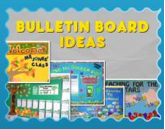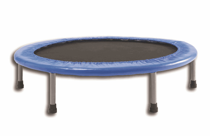Co-Teaching New Year Resolutions
A MiddleWeb Blog
By Laurie Wasserman and Elizabeth Stein
A Happy New Year to all our middle grades colleagues, close at hand and across the world.
We wish you a wonderful 2013 as we all return to school with a new sense of excitement that will guide us to fulfill many personal and professional goals. For those of us who teach in cold climates, it’s not easy clearing snow off our cars and chipping away at ice on the windshield. But we hope you’ll allow the crisp cool air to rejuvenate you with purpose and focus. And before we know it, the warmth of the spring and summer sun will be upon us.
Our resolutions . . .
Like so many people, we’ve taken some time to think about the year to come. Here are two resolutions that we’re sure we share with many co-teachers:
We will take care of ourselves: This includes eating right, exercising, and making sure we get a decent night’s sleep (at least most nights). It’s so easy to stay up late lesson planning, grading papers, and reading into the late hours.
We’ll keep working on our co-teaching relationships: It’s not always possible to attend team meetings and department meetings because sometimes they’re scheduled when we are teaching. But we’ll look for and create opportunities to meet with our co-teachers and other colleagues as much as possible to support all our students.
And our good wishes . . .
As we think about our resolutions, we’re also reminded of the many good wishes we have for our teacher readers. Here are some wishes for all of you — and for ourselves!
We wish you the joyous feeling of a Fresh Start. Treat yourself to a new lesson, project or activity that will renew your spirits and motivate your students.
Laurie: One of my favorites is a Drama unit Paul and I do in ELA class. Last year, he built a low stage for the kids to perform short monologues and skits from “You’re a Good Man Charlie Brown” and Abbott and Costello’s “Who’s on First?” We do excerpts from musicals like “Oklahoma,” “Damn Yankees,” and “West Side Story.” Kids bring in costumes and props and we provide the scripts and lyrics.
Elizabeth: I’m excited to implement a new vocabulary activity that I learned from reading Engage All Students Through Differentiation, by Anne Beninghof. The strategy, called Vocabulary Stack, involves getting students to learn new words through meaningful, personal applications. Students begin to notice these words used through their reading, writing, listening, and speaking. I created the bulletin board before the break, and I’m excited to go back to school and continue to share the strategy with my co-teacher for our English class. I am even more excited to begin to use the strategy with the kids. What I like best is that it gets students to apply their understanding of key vocabulary words—not simply memorize them.
We wish you the energy to create a makeover. Redecorate your room, bulletin boards, and/or walls.

Elizabeth: I love Laurie’s idea for the kids to create, and I do something similar that actually evolved in one of my classes. A few students drew pictures for me or wrote me notes and left them on my desk. I began to pin these up on my wall. I now have an official area where I hang pictures, notes or anything the students give to me. One of my students named this board, “Mrs. Stein’s Wall of Fame.” Students (not just my designated students with IEPs) enjoy adding their bursts of creativity to my wall.
We wish you the strength to bring positive energy into your rooms. Who doesn’t want excited, self-confident learners?
Laurie: Many years ago, a good teacher friend from Canada, Brenda Dyck, shared an idea from her homeroom on using positive words to inspire her students. I took it a step further and created “What I See in You.” It takes just minutes and doesn’t cost more than a package of index cards, but the results are priceless.
Elizabeth: Students love hearing specific positive feedback from teachers, and Laurie, the idea you shared is so easily implemented in any classroom. Here’s something I also find so valuable– especially at the middle school level. I make time for students to compliment and show support for one another. They love to hear from us, but there is additional value in hearing positive feedback from peers. All students benefit from this positive sharing time, and they all have the opportunity to increase their positive self-esteem. It really helps to create a risk-free learning environment. Most times we do it through quick discussions—or sometimes more formally in writing as someone is presenting an idea. Students begin with… “I noticed…” or, “I liked the way you…” Very recently one student said to another, “I noticed you spoke with a louder voice.” His comment meant the world to a student who, until recently, would never contribute in class discussions, or would only speak in an inaudible whisper.
We wish you the ability to manage your time well. We know how hard that can be – and many of us have broken this resolution more than once! But there’s nothing more valuable than our time.

Elizabeth: I am a “to-do list” kind of person. There is something just so rewarding about crossing off tasks once they are completed. Not to mention, just writing my tasks to be done on paper helps me to clear my mind, organize, and prioritize—even if the tasks aren’t done yet.
We wish you the mindset and stamina to take care of yourselves. When we’re healthy, we do our jobs and serve our students best.
Laurie: Most of us make the same resolutions each year to eat less and exercise more, but by the end of the month, how many of us are still doing it? For me, walking with a teacher friend after school, as we talk about our day and share frustrations, can make all the difference between diving into those leftover chocolates (or buying some at half price now that the holidays are over) and feeling like I did something good for myself. If you have a treadmill or gym membership, use it! The e-mails can wait. Listen to the news while you exercise. Make a pact with yourself to prepare healthy lunches and carry nutritious snacks in your book bag.

Finally, we wish you the knowledge and insight to set attainable goals for yourself. Don’t drown in the bottomless sea of responsibility. Set yourself up for success by picking your targets wisely. You can always increase and add to your goals.
Have a peaceful, healthy, and happy 2013!



































LOVE LOVE the advice! As for bulletin boards, I have made that a choice when making a list of projects students can complete in response to a book we’ve read, or a social studies project assigned on a particular topic. Students come up with such creative displays and doing so gives them a sense of belonging in the classroom!
Happy New Year, Cossondra! thank-you for an idea I’d never thought of: using a bulletin board as a venue for a project. Would love to see pictures of some your students have done on your blog. Maybe I can entice our SS students to give it a try once they see what other kids have done.
thanks for sharing :)